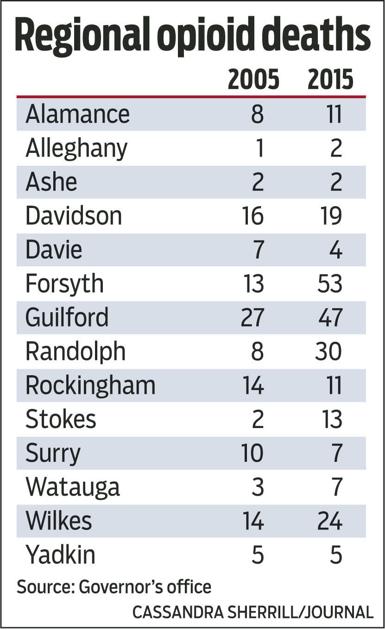
27 Dec CDC: Fentanyl deadliest drug in U.S. | News
WASHINGTON, D.C. –A report from the Centers for Disease Control and Prevention reported that fentanyl has become the deadliest drug in the United States as overdoses more than doubled between 2013 and 2016.
“We’ve taken significant federal action to combat fentanyl—including cutting off foreign shipments and giving our local communities the resources they need to get these deadly drugs off our streets,” U.S. Rep. Richard Hudson (R-NC), a leader in efforts to combat the opioid crisis, said. “This report is a heartbreaking reminder that our work is not done.”
The CDC also reported that deaths involving synthetic opioids other than methadone, including fentanyl, increased almost 47 percent from 2016 to 2017, saying about 28,400 people died from overdoses involving synthetic opioids in 2017. The CDC also stated that according to law enforcement agencies, the overdose increases may be due to illegally manufactured fentanyl.
Pharmaceutical fentanyl is a synthetic pain reliever, the CDC said, and can be used legally to treat severe pain, most commonly for those suffering from advanced stages of cancer. Most of the overdoses and deaths involving fentanyl, however, involve illegally made products, the CDC said, sold through the drug market for its heroin-like effect. Law enforcement said dealers typically mix it with heroin or cocaine, sometimes without the user’s knowledge, which increases euphoric effects.
Hudson has done a lot of work in communities to evaluate the impacts of the opioid crisis and bring local leaders to the table. As a leader on the Energy and Commerce Committee, the panel tasked with writing most of the nation’s health care laws, Hudson continues to be on the front lines of the committee’s work to learn more about how and why the opioid epidemic happened and what legislative solutions can be pursued.
On Oct. 24, at the White House for a landmark bill signing, President Donald Trump signed H.R. 6, a comprehensive package of bipartisan legislation that included three of Hudson’s bipartisan bills that focus on the safe and responsible packaging and disposal of unused opioids, including one that is hailed as one of “the most important opioid bills.”
In October, Hudson joined “Opioids: Hidden Dangers, New Hope,” a new podcast series that provides a 360-degree view of the opioid epidemic, to discuss Congressional efforts to help communities fight this deadly crisis. He has hosted several roundtables across the eighth district to meet with local leaders, local officials, law enforcement, health care professionals and members of the community fighting addiction and talk about ways to improve public health response efforts.
Hudson has worked on several different types of legislation to help combat the opioid crisis.
Disposal legislation is critical as, according to the Journal of American Medical Association, fewer than 10 percent of patients dispose of their opioids properly and 80 percent of people who use heroin first misused prescription opioids. The SOUND Disposal and Packaging Act is a bipartisan bill Hudson introduced with Rep. G. K. Butterfield (D-NC) that would encourage and promote improved packaging and disposal methods with respect to opioids.
Another idea is to study new and innovative technologies that claim to have the capability to safely dispose of opioids and other medications.
The SUPPORT for Patients and Communities Act (H.R. 6) is a comprehensive package of legislation and is a product of months of bipartisan work to find solutions that will help in overall efforts to advance treatment and recovery initiatives, improve prevention, protect communities and bolster efforts to fight deadly illicit synthetic drugs like fentanyl.
Last Congress, Hudson helped the committee lead two major initiatives that were signed into law that provided critical resources for combating the crisis: the Comprehensive Addiction and Recovery Act and the 21st Century Cures Act. In addition, $4 billion was appropriated in the omnibus earlier this year to help combat the opioid crisis.
[ad_2]
Source link



No Comments